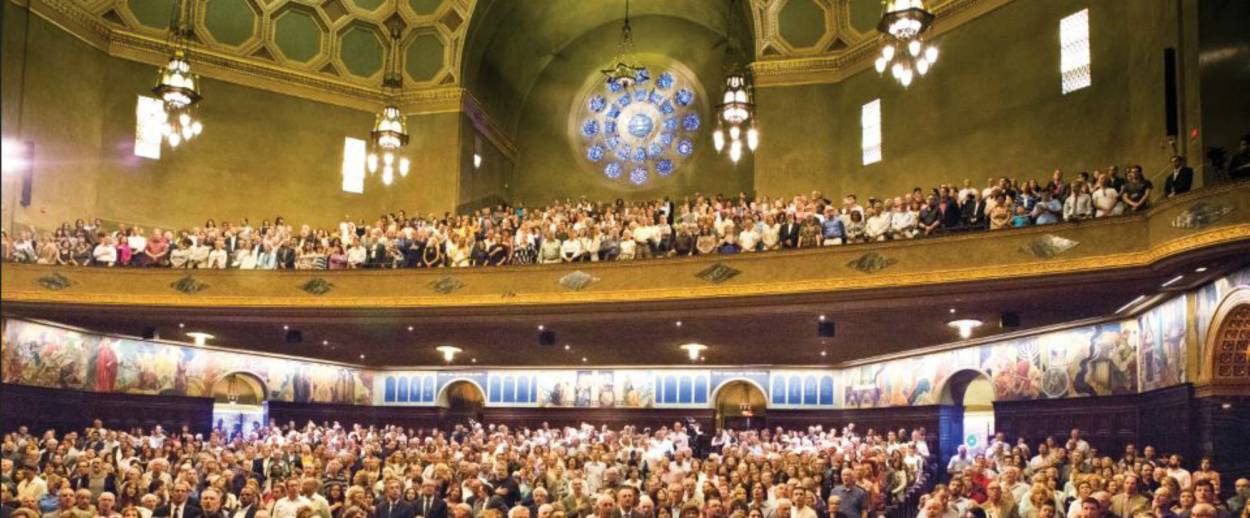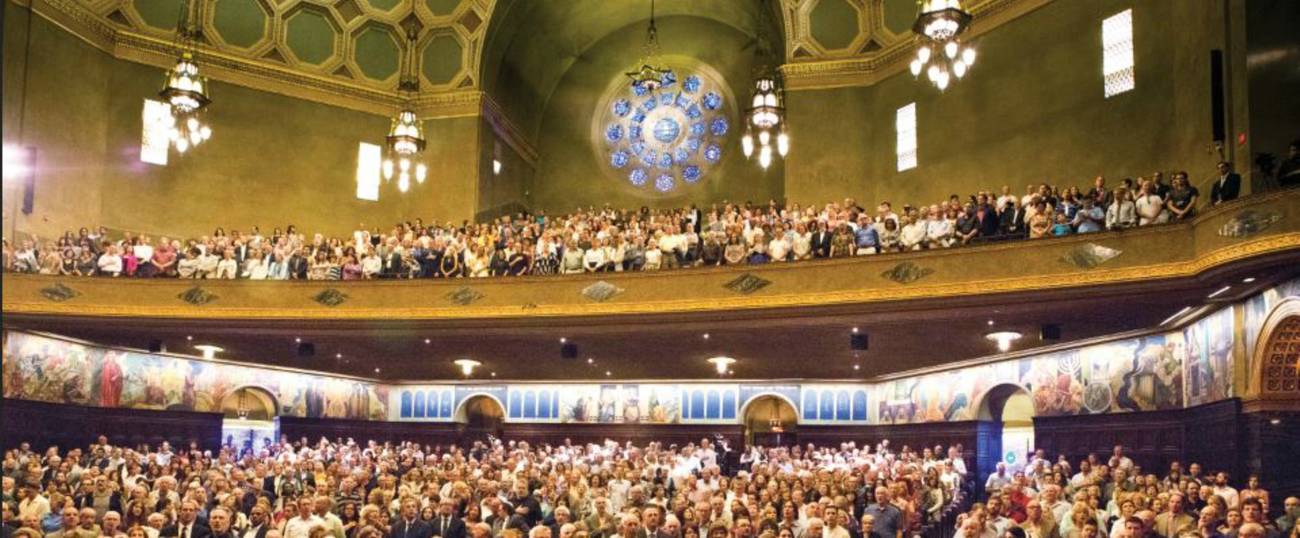Restoration of L.A.’s Wilshire Boulevard Temple Gets—What Else?—a Movie Treatment
Filmmaker Aaron Wolf was a ‘fallen-away’ Jew until he decided to make a documentary about his childhood synagogue




In its heyday, the Wilshire Boulevard Temple, the oldest Reform temple in Los Angeles and national treasure, was the “it” synagogue, abuzz with Hollywood elite during the Golden Age of filmmaking, with members such as the Marx Brothers, Jack Benny, Milton Berle, Henry Winkler (“The Fonz”) and members of the Three Stooges. On the inside, the shul is adorned with beautiful stained-glass windows and opulent murals painted by silent movie filmmaker Hugo Ballin. (The “Warner Murals” were commissioned by Jack, Harry, and Albert Warner of Warner Brothers Co., after achieving roaring success with their first “talkie,” The Jazz Singer).
Over the years, however, the 65,000+ square foot temple has fallen into disrepair, so much that the structure was on the verge of collapse. But in 2011, the current senior rabbi, Steven Z. Leder, decided that the temple needed to undergo a massive fundraising campaign to pay for the $150 million restoration. Aaron Wolf, an LA-based filmmaker who was bar mitzvahed in the temple’s now-remodeled sanctuary, recorded the painstaking renovation (completed in 2013) and made it into a documentary film. Wolf’s feature, Restoring Tomorrow, will debut in January at the Skirball Cultural Center in Los Angeles. The movie-making process, according to a Los Angeles Times article published over the weekend, also brought Wolf, the grandson of the late Rabbi Alfred Wolf, who served the temple for over three decades, closer to his Jewish identity. In fact, the self-confessed “fallen-away” Jew has now become a member of the temple; and he’s “prouder than ever before.”
During research for the film, Aaron Wolf sifted through boxes of memorabilia, resurfacing cherished memories of family gatherings, like Shabbat dinners where his grandmother served spaghetti, and summer days spent at the temple’s Camp-Hess Kramer, which was started by his grandfather in 1952. As Wolf delved further into his family’s past, his Jewish identity rekindled. “I feel excited because I know so much now,” Wolf told the Times. Even Wolf’s father, Dan, noticed his son’s shift.
The Wilshire Boulevard Temple, erected in 1929, was the brainchild of the late Rabbi Edgar Magnin, who has been dubbed as “the John Wayne of rabbis.” Reminiscent of a Byzantine palace with a massive gold dome and elaborate archways, the edifice looks downright anachronistic against the cluttered boulevard upon which it sits, in the heart of L.A.’s Koreatown. Fashioned after Rome’s Pantheon, the temple was built by set designers from MGM, Universal and Warner Brothers studios, which, as luck would have it, were all manned by the temple’s founding members, according to Leder in a recent interview on NPR. About the faux-marble columns, Leder confided, “They’re plaster painted and waxed to look like marble…there’s a lot of Hollywood trickery.”
“We are sitting in the most diverse council district, west of Brooklyn,” said Leder, the shul’s current rabbi, in an interview about Restoring Tomorrow. “There are 40 different languages spoken within a five mile radius of the temple, so whatever the larger non-Jewish community of Los Angeles will know about the Jews, they’ll know from what happens here.” And now, Wilshire Boulevard Temple’s Cinderella transformation, will be told through the eyes of Aaron Wolf, a third-generation member. And, with such a rich cinematic history, it only seems appropriate that the shul return to the limelight with a movie of its own.
Previous: Is This “The Face of the Future of Judaism” for a New Generation in Los Angeles?
Related: Superhero Starts Small
Tess Cutler is an intern at Tablet.